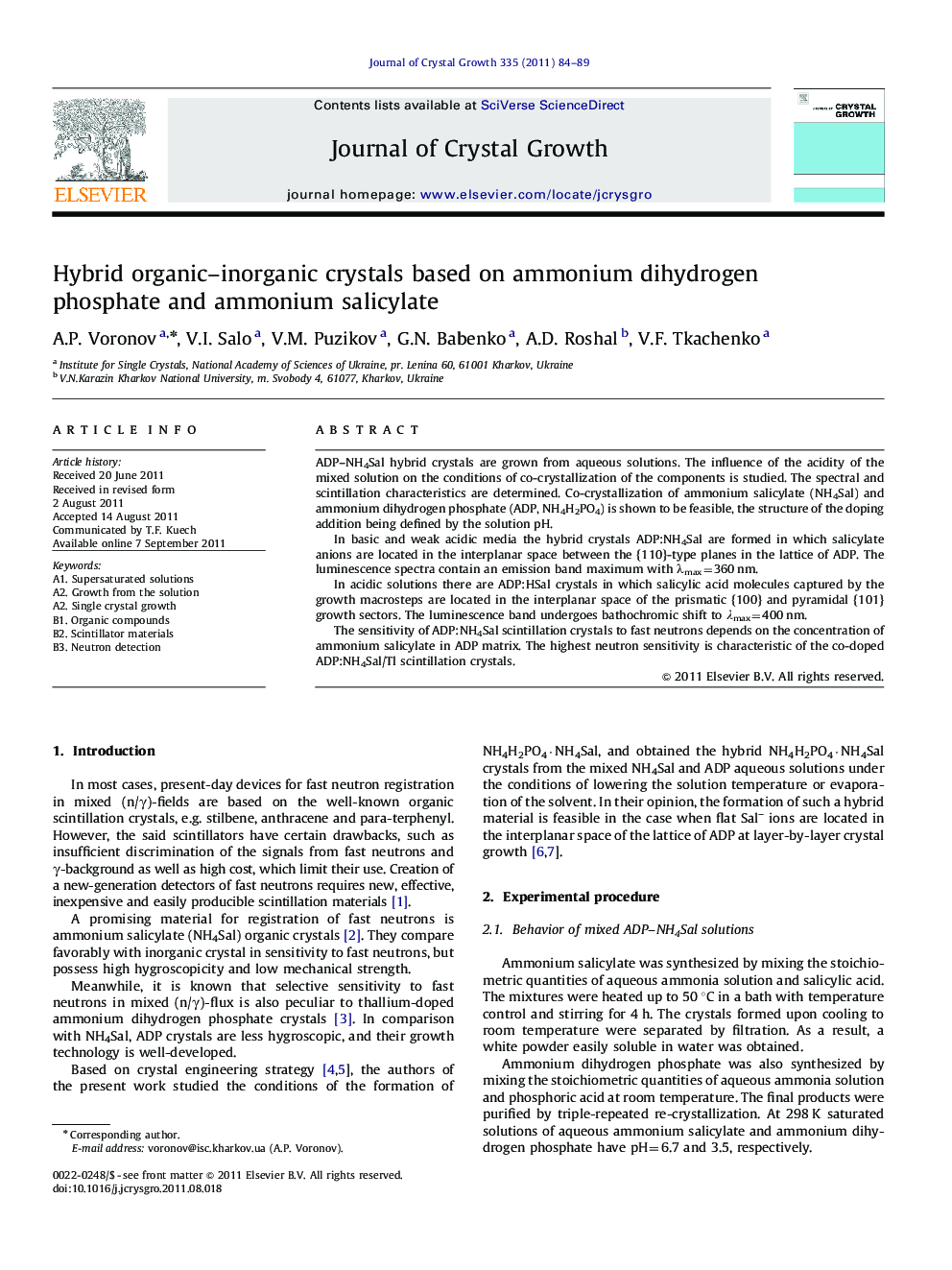| Article ID | Journal | Published Year | Pages | File Type |
|---|---|---|---|---|
| 1792110 | Journal of Crystal Growth | 2011 | 6 Pages |
ADP–NH4Sal hybrid crystals are grown from aqueous solutions. The influence of the acidity of the mixed solution on the conditions of co-crystallization of the components is studied. The spectral and scintillation characteristics are determined. Co-crystallization of ammonium salicylate (NH4Sal) and ammonium dihydrogen phosphate (ADP, NH4H2PO4) is shown to be feasible, the structure of the doping addition being defined by the solution рН.In basic and weak acidic media the hybrid crystals ADP:NH4Sal are formed in which salicylate anions are located in the interplanar space between the {110}-type planes in the lattice of ADP. The luminescence spectra contain an emission band maximum with λmax=360 nm.In acidic solutions there are ADP:HSal crystals in which salicylic acid molecules captured by the growth macrosteps are located in the interplanar space of the prismatic {100} and pyramidal {101} growth sectors. The luminescence band undergoes bathochromic shift to λmax=400 nm.The sensitivity of ADP:NH4Sal scintillation crystals to fast neutrons depends on the concentration of ammonium salicylate in ADP matrix. The highest neutron sensitivity is characteristic of the co-doped ADP:NH4Sal/Tl scintillation crystals.
► ADP:NH4Sal hybrid crystals are grown from aqueous solutions. ► In basic and weak acidic media the hybrid crystals are formed in which salicylate anions are located in the interplanar space between the {110}-type planes in ADP lattice. ► ADP:HSal crystals are obtained from acidic solutions in which salicylic acid molecules captured by the growth macrosteps lie in the interplanar space of both {100}- and {101}-type growth planes. ► ADP:NH4Sal crystals are scintillation materials sensitive to fast neutrons.
